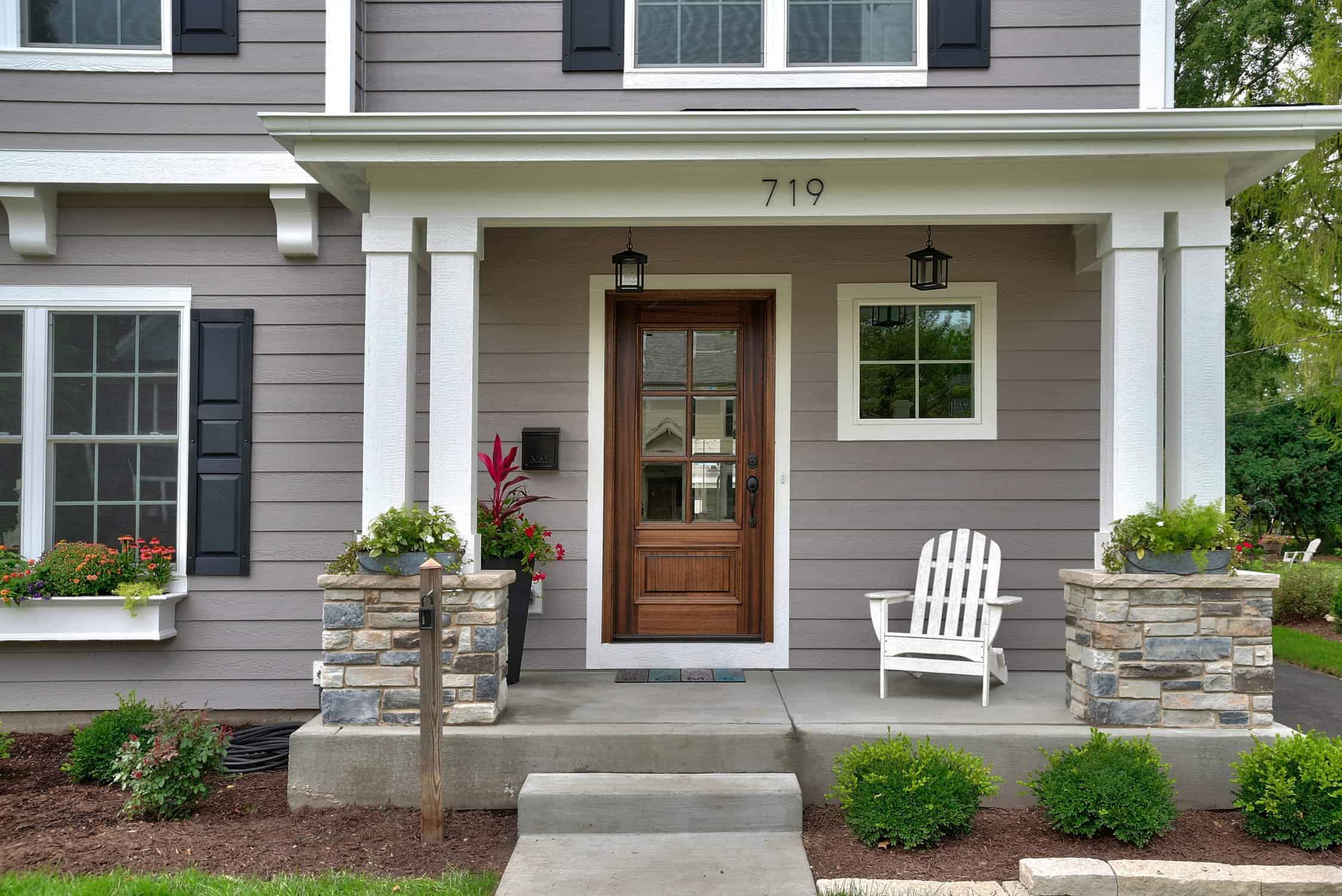Choosing paint for your home is not just about picking a color. It’s about making a decision that impacts your living environment. Many homeowners today are considering the differences between low-VOC paint vs regular paint due to concerns about health, cost, and durability.
Regular paint contains volatile organic compounds (VOCs), which can release chemicals into the air, potentially lowering indoor air quality and affecting the health of those inside the home. Low-VOC paints, on the other hand, are designed to reduce these harmful emissions, but questions remain about whether they perform as well and if they fit the budget.
For homeowners in Houston, TX, who are thinking about repainting their interiors, it’s important to weigh these factors carefully.
How do low-VOC and regular paints compare in terms of cost? Will one last longer or look better than the other?
Which option is safer for your family?
This blog will explore the cost, durability, and health benefits of low-VOC paint vs regular paint to help you make the best choice for your Houston home.
Key Takeaways:
- This blog compares low-VOC paint vs regular paint, focusing on cost, durability, and health benefits for interior projects.
- Low-VOC paint offers significant health advantages and better indoor air quality, while regular paint is more affordable and highly durable.
- Homeowners should weigh their priorities—health, budget, or longevity—to make the best choice, with expert guidance available to help.
What is Low-VOC Paint?
Low-VOC paint is specially designed to contain fewer volatile organic compounds (VOCs) than traditional paints. VOCs are chemicals that are released into the air as the paint dries, potentially contributing to indoor air quality issues and posing health risks. Commonly found in solvents, preservatives, and thinners, these compounds can cause symptoms like headaches, dizziness, and respiratory irritation, especially in poorly ventilated areas.
Low-VOC paint aims to reduce these harmful effects by significantly limiting the amount of VOCs released during and after painting. This makes it a healthier choice, particularly for families with children, elderly members, or anyone sensitive to air quality. Despite its lower chemical content, low-VOC paint still offers the same wide range of colors and ease of application as regular paint, ensuring you don’t have to compromise on style or performance.
The growing demand for low-VOC paint is driven by the desire for safer, more eco-friendly indoor environments. It offers peace of mind for those who want to reduce their exposure to potentially harmful chemicals while still achieving a high-quality finish.
What is Regular Paint?
Regular paint, often called conventional or standard paint, is the most commonly used type for residential and commercial projects. It contains a higher level of volatile organic compounds (VOCs), which are responsible for its strong smell during application and drying. These VOCs are necessary for thinning the paint, speeding up the drying process, and improving overall performance in various conditions.
While regular paint has been a go-to option for many years due to its affordability and availability, the presence of VOCs can affect indoor air quality and potentially cause health issues, such as eye and throat irritation, headaches, and long-term respiratory problems. These effects are most noticeable during application and drying, but VOCs can continue to off-gas into the air long after the paint has dried.
Despite these concerns, regular paint is still widely used because of its proven durability, wide range of finishes, and lower upfront cost. However, it’s important to consider the potential trade-offs in terms of health and environmental impact, especially for interior spaces where air circulation may be limited.
Cost Comparison: Low-VOC Paint vs Regular Paint
One of the primary concerns for homeowners is cost, and when comparing low-VOC paint vs regular paint, there are noticeable differences. Low-VOC paints tend to be slightly more expensive upfront due to the specialized manufacturing process required to reduce the VOC content. The cost can vary depending on the brand, quality, and specific formulation, but generally, you can expect to pay 10% to 20% more for low-VOC options compared to regular paint.
Regular paint is often more affordable and widely available, making it the default choice for budget-conscious homeowners. However, the lower initial price may come with hidden costs over time. Since regular paint releases higher levels of VOCs, you may find yourself investing in additional ventilation or air filtration systems to counter the effects of poor air quality, especially in smaller, enclosed rooms. Furthermore, health-related expenses could also increase if the VOCs lead to respiratory issues, particularly in sensitive individuals.
When comparing the two, it’s important to look beyond the price tag and consider the long-term impact on your home and well-being. While low-VOC paint may be a larger initial investment, its benefits in terms of health and indoor air quality could outweigh the additional cost, offering savings in the long run.
Durability: Which Lasts Longer?
Durability is another key factor when comparing low-VOC paint vs regular paint. Traditionally, regular paints have been known for their strong, long-lasting finish. They often provide better resistance to wear and tear, which is why they’ve remained popular for high-traffic areas in homes, such as hallways, kitchens, and living rooms. The high VOC content in regular paints contributes to their ability to dry faster and create a tougher, more resilient surface.
Low-VOC paints, however, have evolved significantly over the years. Early formulations of low-VOC paint were criticized for not being as durable or resistant to damage as regular paint. But with advancements in technology, modern low-VOC paints can now compete with, and sometimes even exceed, the durability of regular paints. Many high-quality low-VOC paints are designed to be scrubbable and washable, making them suitable for areas that require frequent cleaning.
The difference in durability between low-VOC paint and regular paint largely depends on the brand and type of paint used. Both types offer various finishes, from matte to high gloss, which can affect how they hold up over time. It’s important to select the right paint for the specific room or area being painted, ensuring it meets your durability needs while also considering the health and environmental benefits.
Health Benefits of Low-VOC Paint vs Regular Paint
Health considerations are often the primary reason homeowners choose low-VOC paint over regular paint. As mentioned earlier, regular paint contains a higher concentration of VOCs. These compounds release fumes into the air, which can lead to a variety of health issues, especially in enclosed spaces with poor ventilation. Immediate symptoms from exposure to VOCs include:
- Headaches
- Dizziness
- Nausea
- Eye irritation
- Nose and throat irritation
Prolonged exposure may contribute to more serious health problems, particularly for those with respiratory conditions or compromised immune systems.
Low-VOC paint is designed to minimize these risks. By reducing the number of VOCs, low-VOC paint dramatically improves indoor air quality, making it a safer option for families, especially those with children, elderly members, or individuals with allergies or asthma. Low-VOC paints also produce less odor during and after application, which makes the painting process more comfortable and allows rooms to be reoccupied more quickly without lingering chemical smells.
Using low-VOC paint contributes to a healthier environment by reducing the amount of harmful chemicals released into the air. This is particularly important for homeowners who prioritize eco-friendly practices and want to make their homes as green and sustainable as possible.
Final Thoughts
Choosing between low-VOC paint vs regular paint ultimately depends on what matters most to you—whether it’s ensuring a healthier environment, long-lasting durability, or finding the right balance between the two. Low-VOC paint offers clear health benefits by reducing harmful emissions, while regular paint provides affordability and proven resilience.
At Streamline Painting & More, serving Spring, Montgomery, TX and surrounding areas, we start with a personalized consultation to understand your needs and preferences. Our expert team will guide you through every step, ensuring you feel confident in your decision. We’re here to deliver a beautiful finish that matches your lifestyle and priorities.
Call us at 281-572-8332 for a FREE estimate and let us help bring your vision to life!







